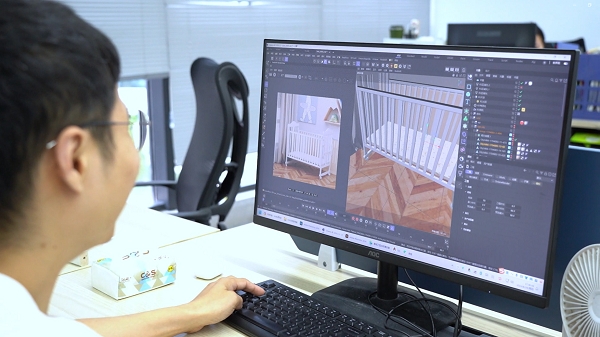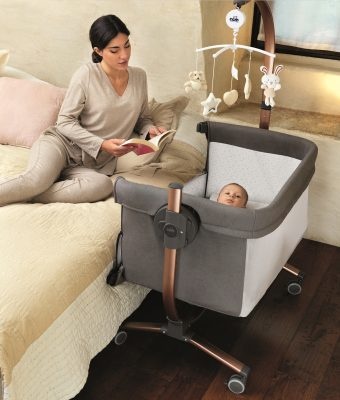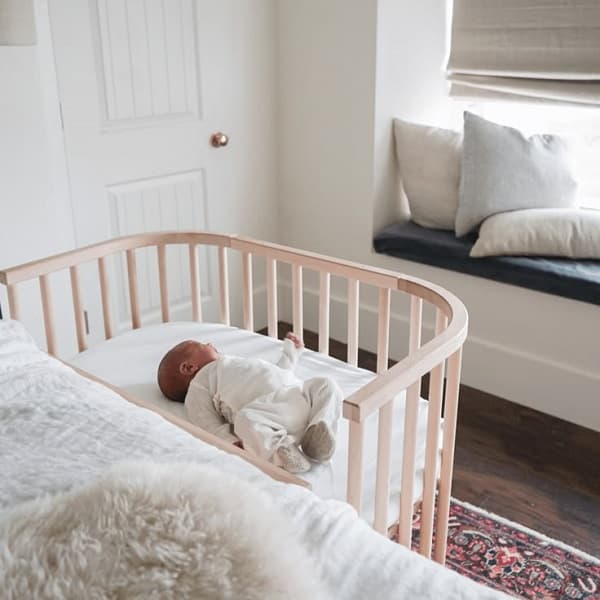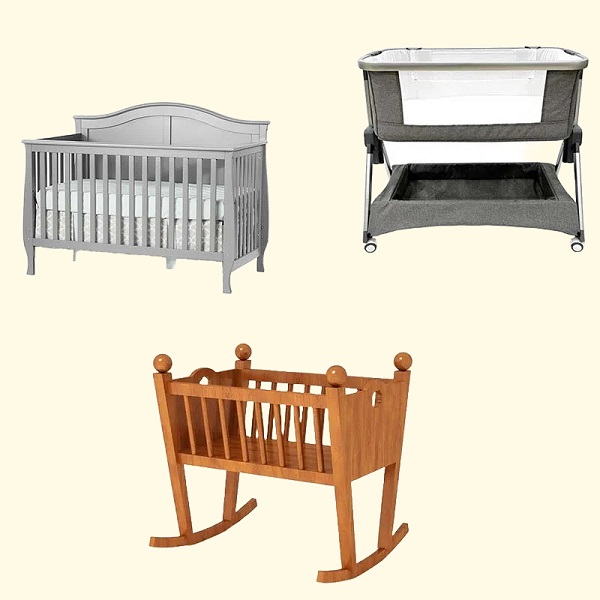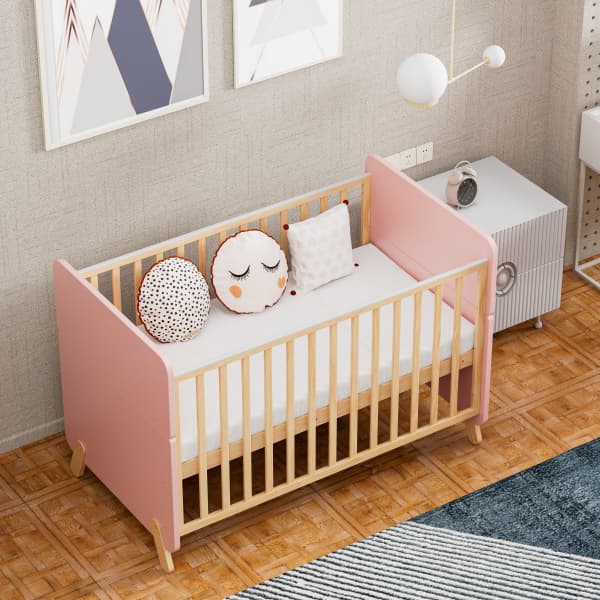For any parenting family, your baby’s sleep setup is important. For new parents, choosing between a co-sleeper and a bassinet isn’t just about aesthetics or trends; it’s about safety, convenience, and what lets everyone (yes, including you) rest a little easier.
You’ve probably seen the debates online—co-sleepers praised for midnight feeding ease, bassinets hailed as space-saving heroes. But which one truly fits your life?
We’re cutting through the noise with a breakdown grounded in safety guidelines, real-parent experiences, and practical pros and cons. No fluff, no pressure—just clarity to help you make the best call for your growing family.
What Is a Co-Sleeper?
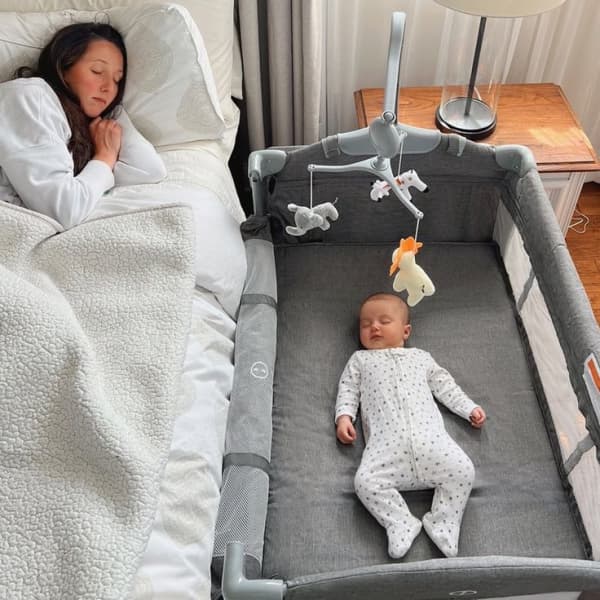
Imagine having your baby right beside you—close enough to soothe with a gentle touch but safely separate in their own space. That’s the magic of a co-sleeper.
Think of it as a “sidecar” for your mattress: your baby gets their firm, flat sleeping surface (as recommended by the AAP), while you get easy access for midnight feedings or quick diaper changes.
The concept stems from the “room-sharing” recommendation by the American Academy of Pediatrics (AAP), which advises infants to sleep in the same room as caregivers—but not the same bed—for at least the first six months. Co-sleepers simplify this arrangement, offering a practical middle ground for families who want to minimize nighttime disruptions without compromising safety guidelines.
This setup is endorsed by many pediatricians for its balance of proximity and safety, particularly for breastfeeding parents or those recovering from childbirth.
Features
Most models feature adjustable height settings, allowing parents to align the sleeper’s mattress perfectly with their own bed frame. This eliminates dangerous gaps where a baby could become trapped—a critical design element emphasized by safety regulators.
Breathability is another hallmark of quality co-sleepers. Mesh or slatted walls ensure airflow, reducing the risk of overheating and allowing parents to monitor their baby without sitting up. Some fold compactly for travel, though they’re bulkier than bassinets.
Pros and Cons
Pros:
Parents can soothe, feed, or check on their baby with minimal movement—a lifesaver for those recovering from C-sections or dealing with postpartum fatigue.
Studies suggest that close proximity can also enhance bonding; a 2021 report in Infant Behavior & Development found that infants who room-share with parents exhibit more stable heart rates and fewer stress cues during sleep.
Cons:
However, co-sleepers aren’t without drawbacks. Their higher price point (typically 150–300) can strain tight budgets. Compatibility is another concern: not all co-sleepers fit every bed frame, and improper installation can create hazardous gaps.
Different Types of Co-Sleepers
Bedside Co-Sleepers: The most common type, these attach directly to an adult bed frame, include adjustable legs and locking mechanisms for stability.
In-Bed Co-Sleepers: Smaller, portable units sit directly on the adult bed, creating a separate sleep surface. These are controversial, however, as the AAP warns against placing any sleepers on adult mattresses.
Convertible Co-Sleepers: Products like the Pack ‘n Play Playard double as portable playards, extending usability beyond infancy.
What Is a Bassinet?
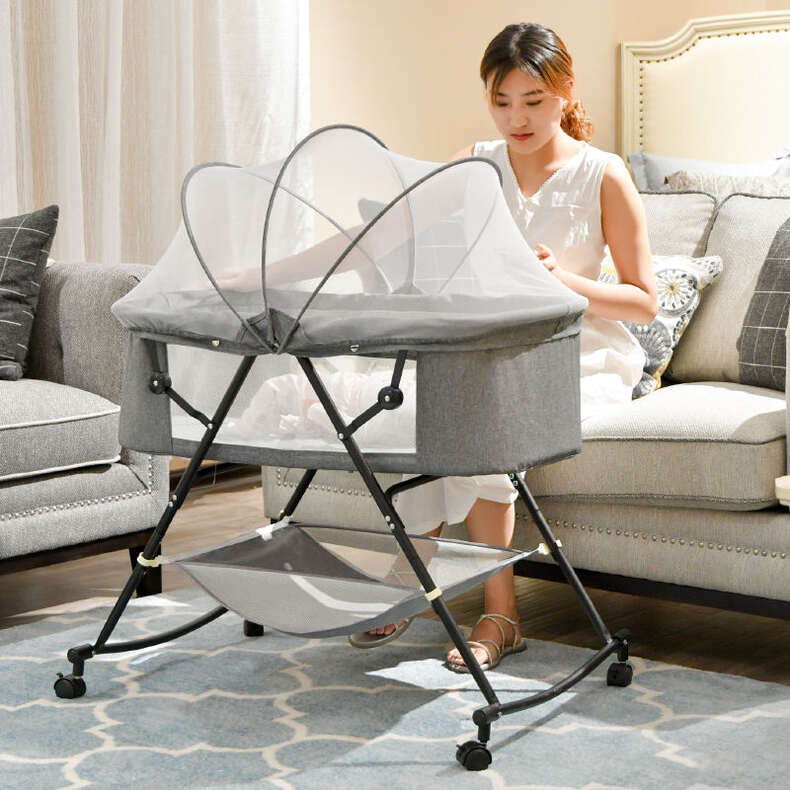
Picture a cozy, self-contained nest that tucks neatly into a corner—or even rolls from room to room. That’s the bassinet: a compact, standalone sleep space designed for newborns.
Unlike co sleepers, bassinets don’t attach to adult beds, making them ideal for parents who want the baby nearby but not too nearby (we see you, light sleepers!).
Historically, bassinets have been a cultural staple, with variations appearing in nearly every society. Today, they’re endorsed by safety organizations for their portability and compliance with safe-sleep standards.
The AAP specifically approves bassinets with firm, flat mattresses and breathable walls, provided they meet Consumer Product Safety Commission (CPSC) certifications.
Features
Many include rocking or gliding mechanisms, some models mimic the motion of a car ride to lull fussy infants. Others offer adjustable height settings to align with adult beds, blurring the line between bassinets and co sleepers.
Storage is another common feature. There is usually storage space underneath for diapers or blankets.
Portability is a key selling point. Lightweight frames and compact designs allow bassinets to be moved easily between rooms. However, most bassinets lack the robust anchoring systems of co sleepers, which means they shouldn’t be placed on elevated surfaces like beds or sofas.
Pros and Cons
Pros:
Bassinets excel in flexibility and affordability. Their smaller footprint makes them ideal for tight spaces, and prices typically range from 50–200, significantly lower than most co sleepers.
For parents who value mobility, being able to wheel a bassinet from the bedroom to the living room simplifies daytime supervision.
Cons:
On the flip side, bassinets have strict limitations. Most models cap at 15–20 pounds, meaning babies often outgrow them by four months.
Once an infant begins rolling over or pushing up on hands (developmental milestones typically reached by five months), bassinets become unsafe, and a crib is required.
Different Types of Bassinets
Standard Bassinets: Simple, no-frills designs focus on affordability and ease of use.
Smart Bassinets: Using AI-driven motion and sound to respond to crying, though they come with a premium price tag.
Multi-Functional Models: It can convert from a bassinet to a changing table, extending its utility.
Portable Bassinets: Collapsible designs are ideal for travel or grandparents’ homes.
Co Sleeper vs Bassinet: Key Difference
(Co Sleeper vs Bassinet Comparison Table)
| Factor | Co Sleeper | Bassinet |
| Safety | Secure attachment required; risk of gaps if misaligned | Standalone; fewer installation risks |
| Proximity | Baby is at arm’s reach; ideal for quick soothing | Baby is nearby but requires getting up |
| Portability | Bulky; limited to one room unless disassembled | Lightweight; often includes wheels or folds |
| Cost | 150–300+ | 50–200+ |
| Lifespan | Up to 6 months (or until baby can sit up) | 4–5 months (or until baby reaches 15–20 lbs) |
Safety and Accessibility
Co sleepers shine in scenarios where immediate access to your baby is non-negotiable. By attaching directly to your bed, they allow you to tend to nighttime needs without fully leaving your mattress—ideal for parents recovering from surgeries or managing postpartum anxiety.
However, this setup demands rigorous safety checks. A poorly installed co sleeper with gaps between the adult bed and the unit can pose entrapment risks, a concern highlighted in CPSC recall reports.
Bassinets, on the other hand, prioritize independent sleep spaces. Their standalone design eliminates attachment risks but requires parents to physically get up for each nighttime interaction.
For light sleepers, this separation can mean fewer disruptions, but it also means more effort during those exhausting midnight feeds.
Space and Portability
If you’re working with a small bedroom or a studio apartment, bassinets often take the lead. Their compact, lightweight frames (many under 15 pounds) can tuck into corners or glide effortlessly between rooms.
Co sleepers, while space-efficient in theory, require careful alignment with your bed. In rooms with unconventional bed frames (e.g., four-poster beds or low-platform designs), finding a compatible model can be challenging. Their bulkier build also makes them less travel-friendly—packing a co sleeper for a weekend at Grandma’s house is rarely practical.
Cost and Longevity
Bassinets are generally kinder to tight budgets. Entry-level models start around $50. However, their shorter lifespan—most are outgrown by 4–5 months—means you’ll still need to invest in a crib later.
Co sleepers often cost more upfront, but some models bridge the gap between infancy and toddlerhood. The Pack ‘n Play Playard, for instance, converts from a co sleeper to a playpen, offering extended use. Still, many parents find themselves transitioning babies to cribs around 6 months, regardless, as active infants may protest the confined space.
Which One Matches Your Parenting Style?
The Attachment-Focused Parent: If fostering a strong emotional bond and responding instantly to your baby’s cues are top priorities, a co sleeper’s design naturally complements your goals. Keeping your newborn within arm’s reach supports practices like frequent nighttime feeding and gentle soothing, which are central to attachment parenting. Experts suggest that proximity during the early months can enhance breastfeeding success and reduce parental anxiety.
The Practical Minimalist: For parents who value simplicity and clutter-free living, a bassinet’s straightforward design often feels like the logical choice. Its temporary nature (most are used for less than six months) aligns with a minimalist ethos, avoiding long-term commitments to bulky baby gear.
The On-the-Move Family: If your lifestyle involves frequent travel or juggling multiple caregivers, portability becomes non-negotiable. Bassinets excel here, with many models designed to fold, roll, or compress for hassle-free transport.
The Flexible Hybrid: Some families blend both approaches, using a co sleeper during the newborn phase for convenience and transitioning to a bassinet (or crib) as their baby grows. This method balances early bonding with fostering independent sleep habits.
FAQ
Can I Use a Co-Sleeper or Bassinet Instead of a Crib?
No, these are temporary sleep solutions for newborns. Once the baby outgrows the co-sleeper or bassinet (around 3-6 months), you should transition them to a crib for safety.
Can I Use a Co Sleeper Without Attaching It to My Bed?
Some co sleepers can function as standalone bassinets if detached, but this depends on the design. Check the product manual—if the unit isn’t stable on its own, using it unattached could create tipping hazards.
Can I Use Both a Co Sleeper and a Bassinet?
Absolutely! Many parents use a co sleeper in their bedroom for nighttime feeds and a portable bassinet in living areas for daytime naps.
Do Co-Sleepers and Bassinets Require Special Mattresses?
Both should be used with firm, flat mattresses specifically designed for their size to ensure the baby’s safety.
Conclusion
Both options have their merits: co sleepers bridge the gap between bonding and safe sleep, while bassinets offer flexibility and simplicity. What matters most is how well your choice aligns with your baby’s needs, your living space, and the cadence of your daily life.
Remember, this decision isn’t permanent. Most families transition to a crib within six months, making this a short but impactful chapter in your baby’s sleep story. Trust your instincts, lean on expert recommendations, and don’t hesitate to adjust as your little one grows.

